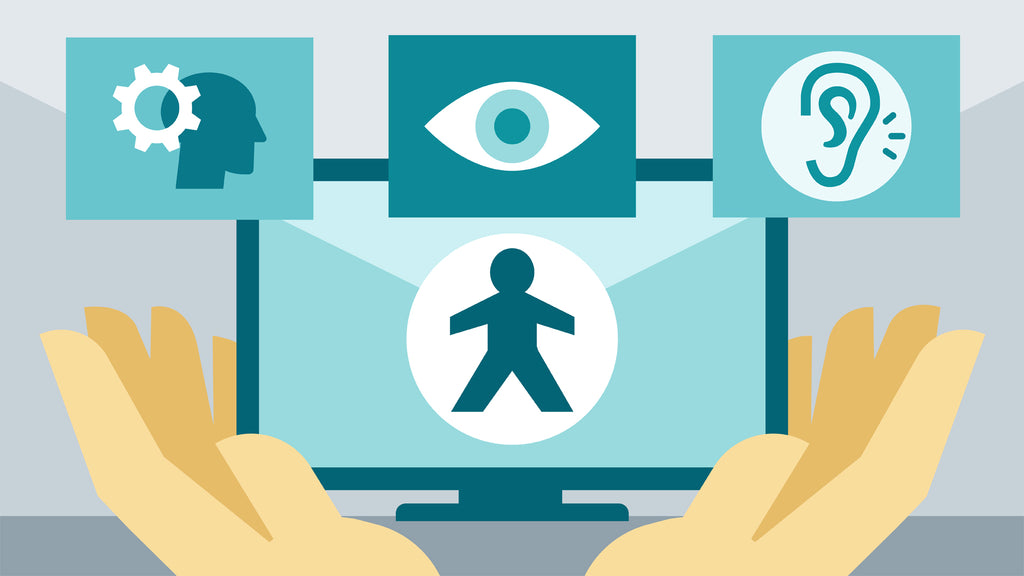Image Source - (Lynda.com)
2017 and 2018 have seen major strides towards making technology more accessible to individuals with disabilities. Here are some of the biggest accessibility announcements we’ve seen from consumer technology companies in the past year.
1. Microsoft "AI for Accessibility"
In May 2018, Microsoft announced its pledge of $25 million to the AI for Accessibility program that will invest in artificial intelligence initiatives supporting users with disabilities. By offering seed grants for startups, nonprofits, and researchers, Microsoft aims to empower people to be more independent with productivity tools that were made with the disability community in mind.
2. tecla-e

Launched in summer of 2017, tecla-e is the third iteration of Tecla devices that provides hands-free access to Bluetooth-enabled devices for people with limited upper body mobility and hand dexterity. tecla-e expanded the capabilities of the previous devices by being able to connect with smart home devices and connect to and switch between up to 8 devices.
3. Apple’s "Designed for Everyone" Campaign
In May 2018, Apple launched its “Designed for Everyone” advertising campaign that featured 7 users with disabilities sharing how Apple products have improved their lives and independence. The campaign featured two Tecla users, Todd and Ian, who access their smartphones using Switch Control and Tecla in order to run a foundation, track wheelchair ride statistics and routes, and more.
4. Google Maps Wheelchair Feature

One of the most popular navigation apps for both Android and iOS users, Google Maps, recently added a new feature for wheelchair users that provides a picture of their local public transit’s accessibility. As many of us can attest to, big cities around the world are not seamlessly integrated with essential accessibility features like elevators at every transit station. This feature allows wheelchair users to feel confident when taking public transit knowing what barriers to avoid while their city improves its accessibility.
5. Apple's Inclusive Emojis

A few years ago, Apple began its journey in making emojis more inclusive by adding the much-needed skin color options to its symbols depicting people. Now, Apple has proposed a series of emojis that represent individuals with disabilities including prosthetics, hearing aids, and people riding power chairs. An Apple representative stated, “This is not meant to be a comprehensive list of all possible depictions of disabilities, but to provide an initial starting point for greater representation for diversity within the emoji universe.”
6. Microsoft Accessible Gaming Controller

Compatible with Xbox One and Windows 10 PC games, the new adaptable controller by Microsoft can be connected to external buttons, switches, joysticks, and mounts so that people with physical disabilities can access mainstream video games. This was a huge step towards evolving the worldwide gaming phenomenon towards inclusivity as people with physical disabilities join the 48 million active Xbox subscribers.
7. Airbnb Accessibility Filters
Following Airbnb's acquisition of Accomabile, a company providing access to accessible vacation retreats, the popular travel site introduced new filters to help travellers find homes and hotels that fit their needs. Some of the filters include:
- Step-free access
- Well-lit path to entrance
- Flat path to front door
- Wide doorway
- Wide hallway clearance
- Elevator
- Fixed grab bars for shower, toilet
- Disabled parking spot
Web and App developers can make their own technology more inclusive by following digital accessibility best practices. The following links provide detailed guidelines for building accessible apps and websites for:


Leave a comment: